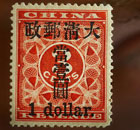Foreign and Military Affairs
Chinese medical team relocates for Haitian quake victims
(Xinhua)
Updated: 2010-02-02 15:19
 |
Large Medium Small |
PORT-AU-PRINCE: A Chinese medical team has relocated its operation site to a shelter in the Haitian capital where it will provide services more directly and conveniently to earthquake victims, the team's leader said on Monday.
The Mais Gate shelter is located near the Port-Au-Prince interantional airport and can accommodate as many as 5,000 people, Wang Yurong, head of the team, told Xinhua.
Inside the shelter, both living and working conditions are crude, he said. There are tents provided by international donors and improvised cotes made by locals with tree branches and plastic sheets.
The aim of relocating the team's operational site from a downtown plaza to the shelter is to provide more direct and convenient services to the earthquake victims, said Wang.
On Monday, the team treated 536 victims and 60 percent of them were women and children.
Since its arrival in the quake-ravageed Caribbean nation on January 25, the team has provided services to more than 1,800 Haitians, and trauma, diarrhea and gynecological diseases were the most common conditions it had treated, according to Wang.
There are many mosquitoes and flies, but they can hardly resist the pesticides and will die instantly after pesticides are used, he said.
Chinese doctors decided to teach the locals with epidemic prevention methods rather than simply giving them the equipment and medicine, said Yang.
The Chinese team gathered 10 volunteers in the shelter and taught them how to prepare the medicines and how to use the sprayers.
Under the team's instructions, the volunteers conducted a thorough sterilization of the shelter. Thus, even after the Chinese team leaves, locals can do the epidemic prevention work by themselves.
The Chinese team consists of 40 medical workers, among whom are internists, surgeons and anti-epidemic experts from China's military medical service.
They have participated in other UN peacekeeping missions and the massive rescue mission after a devastating quake hit Southwest China's Sichuan province in 2008.











